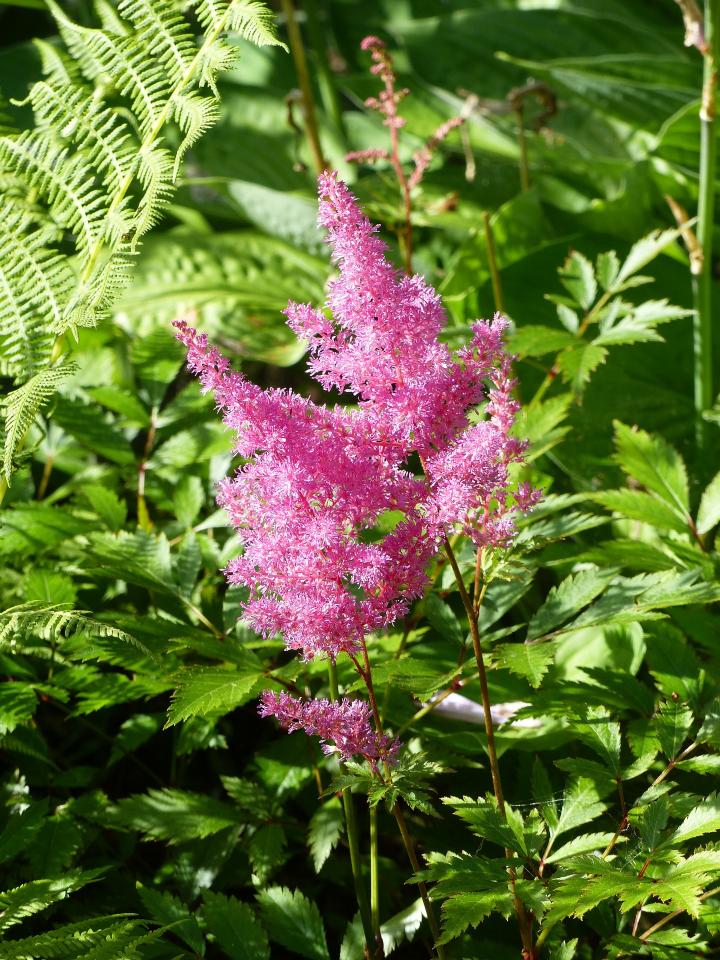
Astilbe is a perennial with beautiful, showy flowers atop glossy, fern–like foliage. Its flower clusters vary in size from 6 inches to 2 feet and its height varies from 6 inches to 5 feet, depending on the type.
If you have a shady area, try astilbes to add color!
Planting
- Astilbes prefer a site that receives light to moderate shade; they will burn in full sun.
- Astilbes prefer soils that provide average to slightly below average moisture. Make sure your soil drains well and does not puddle or get water-logged in rain. Amend soil, especially clay types, with peat moss, perlite and coarse sand to improve the drainage.
- You can plant astilbe seeds, but they are short–lived and difficult to germinate. It is easier to plant the divisions from other astilbe plants.
- Plant the divisions in the spring or fall about 1 to 3 feet apart, depending on the type.
- If you are planting bare-root plants, make sure the holes are twice as wide as the plants and 4 to 6 inches deep. Place the plants so that the roots are fanned slightly and pointing downwards, with the crown planted 1 to 2 inches below the ground level. Cover the roots with soil and press firmly.
- Make sure to plant the divisions in consistently moist, humus-rich soil. Dry soil can be fatal to your plants.
- To prolong the foliage, provide shade from hot afternoon sun. Astilbes can grow in deep shade but will not flower as much.
Care
- Remember to regularly check your astilbes to make sure they are moist. Water accordingly if rain does not occur. It’s best to water deeply when you water (not everyday sprinkling).
- Astilbes spread quickly and form broad clumps. Their crowns often rise above the soil as they grow, so make sure to cover them with humus-rich soil or lift and replant the clumps.
- Your astilbes will benefit from a balanced organic fertilizer applied in the spring.
- Be sure to divide the overgrown clumps every 3 to 4 years in the spring. You can either replant the divisions immediately or put them in pots to be planted out in the early summer when they are re-established.
- Astilbe do fine as cutting flowers if you wish to clip some blooms to bring inside.
- Removing the flower heads will not promote continued flowering.
- After blooming has finished for the season, feel free to clip off any spent flower stems. Your astilbes will continue to provide attractive foliage until fall.
- After the first frost, the leaves may yellow; trim leaves if you wish and fresh growth will come next spring.
Pests/Diseases
- Tarnished plant bug
- Powdery mildew
- Bacterial leaf spots
- Luckily, astilbe are deer-resistant.
Recommended Varieties
- Fanal, for its dark green foliage and dark crimson flowers
- Irrlicht, for its dark green foliage and elegant white flowers
- Venus, for its bright green foliage and bright pink flowers






